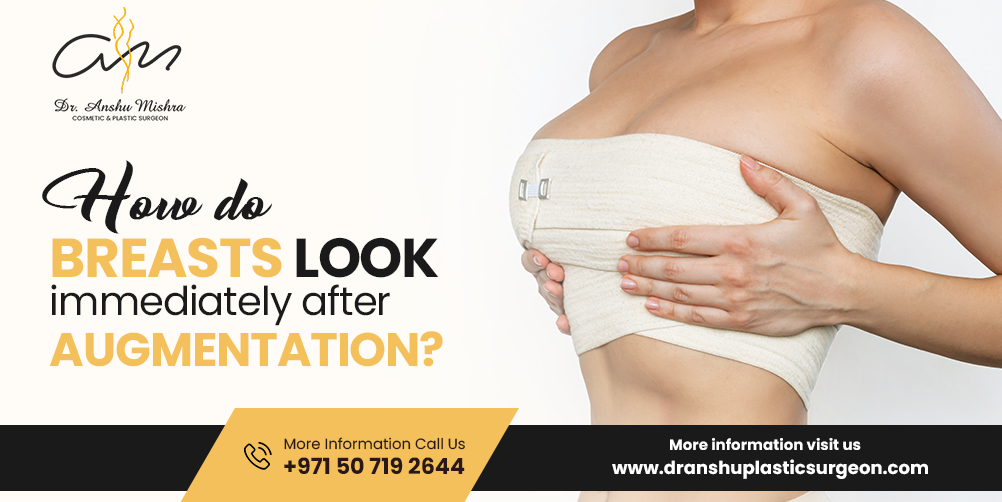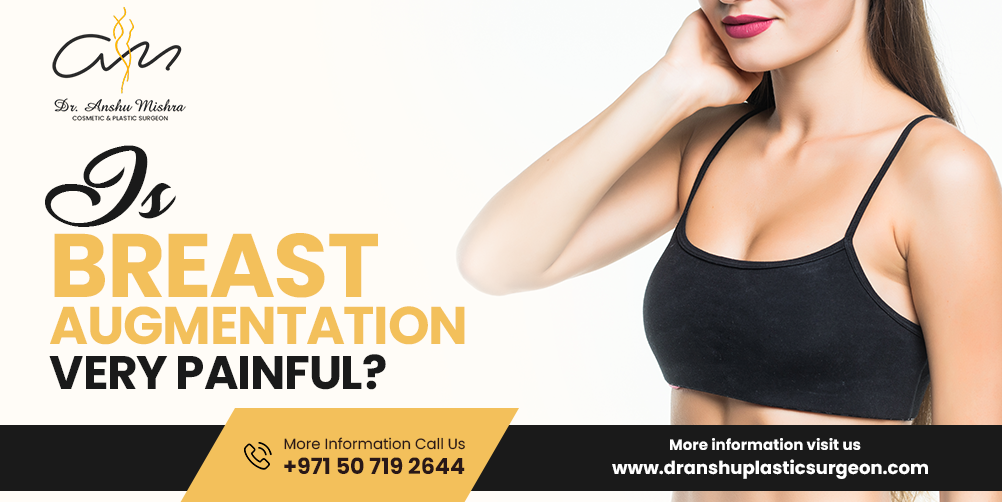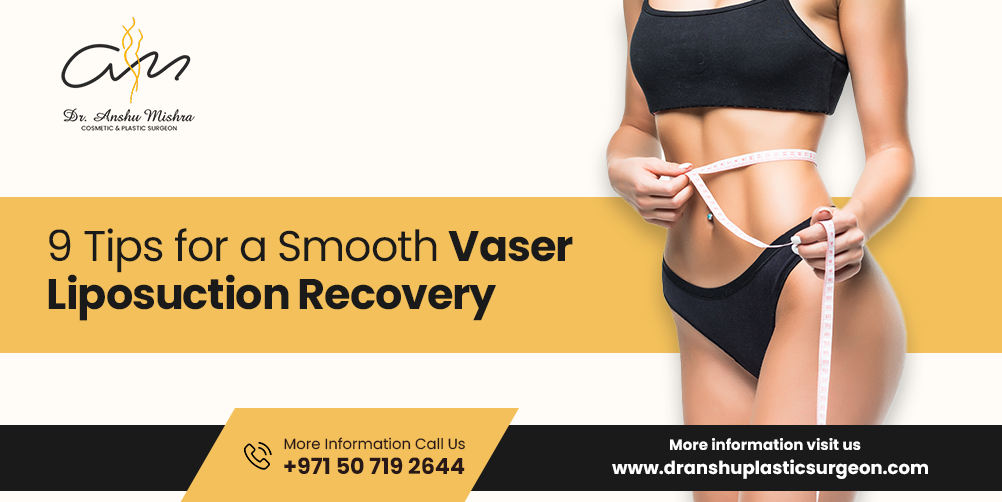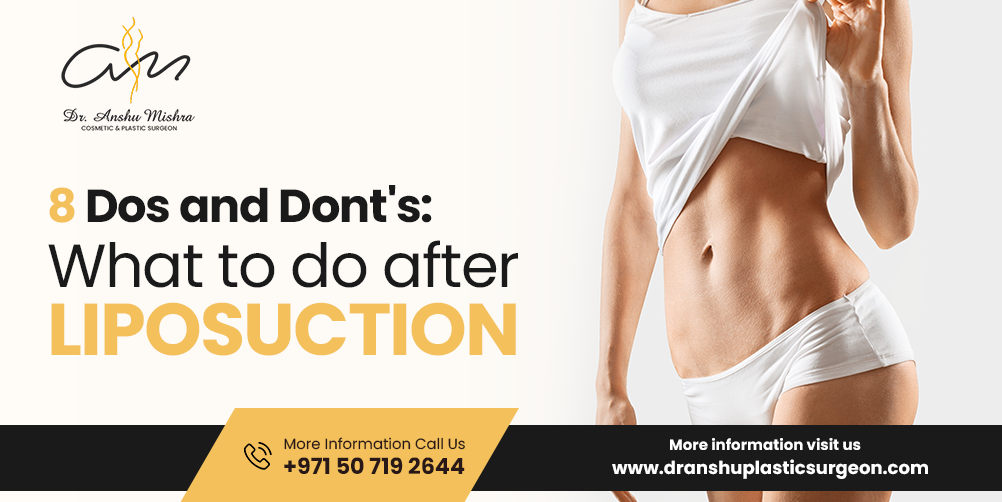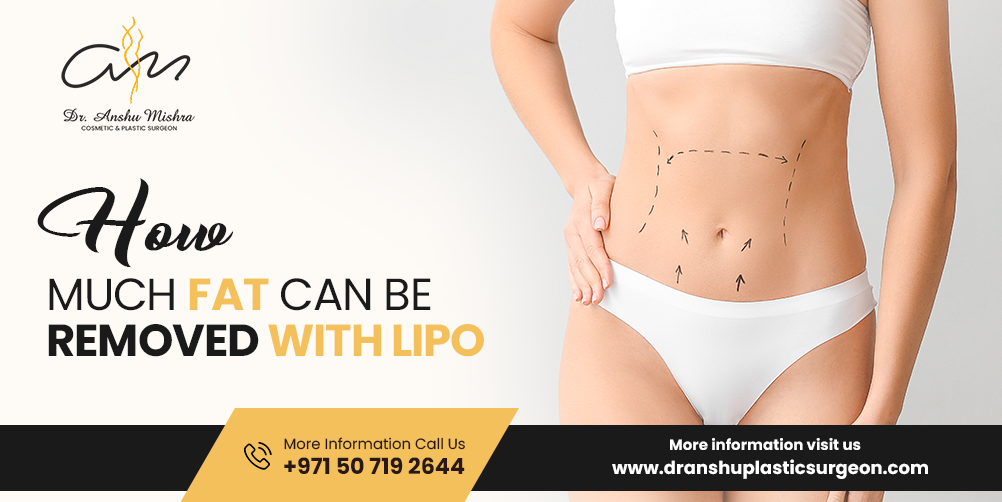Over time, liposuction has changed dramatically, providing a range of methods to satisfy different cosmetic requirements. Dr Anshu Mishra, the best female plastic surgeon in Dubai, with a great deal of experience in body shaping, explores the nuances of several liposuction techniques in this blog.
Dr. Mishra clearly describes every procedure, from conventional methods to state-of-the-art breakthroughs, outlining how it is carried out, its advantages, and any potential disadvantages. People may make well-informed judgements regarding their cosmetic objectives by being aware of these possibilities. Whether you’re thinking of minimally invasive surgery or looking for cutting-edge ways to get rid of stubborn fat, we will walk you through the most recent developments in liposuction technology.
Table of Contents
ToggleDifferent Types Of Liposuction
-
Tumescent Liposuction
During tumescent liposuction, the targeted fat regions are injected with a saline solution containing epinephrine and lidocaine, an anaesthetic” explains Dr Mishra. This solution helps in separation of fat cells, enabling suctioning them out simpler. A tiny incision is created, and a cannula—a thin tube—is introduced to draw fat cells out from under the skin.
The tumescent solution also constricts the blood vessels , thereby reducing bleeding and bruises. A vacuum-like instrument is used to perform the suction through the cannula, which is moved to efficiently remove fat.
Because a local anaesthetic is used, tells Dr Anshu Mishra, tumescent liposuction is renowned for its shortened recovery period and decreased discomfort. Because of the way epinephrine affects blood vessels, the procedure dramatically reduces the risk of bleeding and bruising. It also works well for removing significant amounts of fat with minimal damage to adjacent tissues.
One drawback is that people with specific medical issues or particularly big regions may not be good candidates for tumescent liposuction. If too much fat is removed, there may be a higher chance of problems and some bruising or disparities in the treated region.
-
Ultrasound-Assisted Liposuction (UAL)
Before fat cells are aspirated, ultrasonic waves are used in ultrasound-assisted liposuction to soften them. An ultrasonic handpiece-equipped cannula is introduced into the layer of fat, which liquifies the fat that is readily suctioned away.
The vibrations produced by the ultrasonic waves emulsify the fat, reducing its density and simplifying its removal. After the fat has liquefied, it is sucked using a cannula, which frequently produces a smoother shape.
Dr Mishra explains that in fibrous regions where standard liposuction could be less successful, UAL might be especially useful. Because the ultrasound creates heat, this method may also result in more accurate fat removal and enhanced skin tightening.
If ultrasound is not handled appropriately, it can occasionally result in burns or skin irritation. UAL carries a higher risk of more obvious swelling and may require a longer healing period than tumescent liposuction.
-
Laser-assisted liposuction (LAL)
To liquefy fat before suctioning it out, laser energy is used in laser-assisted liposuction. The fat cells are targeted by a tiny incision that receives a thin laser fibre. The fat is heated and melted by the laser radiation before being extracted using a cannula.. In addition, the laser encourages the creation of collagen, which may aid in skin tightening.
Compared to conventional liposuction methods, LAL usually results in less blood loss and bruises. By tightening the skin in the treated regions, Dr Mishra explains, the laser energy may improve the overall outcome. Recoveries can happen quickly, and many people only have a little pain.
Incorrect execution of the procedure carries a risk of skin burns and other laser-related problems. For regions with thick deposits of fat or large-volume fat removal, LAL might not be as successful. Additionally, the utilisation of cutting-edge technologies may result in a higher procedure cost.
-
Power-Assisted Liposuction (PAL)
A rapidly vibrating or oscillating mechanical cannula is used in power-assisted liposuction. By breaking up and loosening fat cells, this action facilitates their removal. The vibration can increase the effectiveness of fat removal while requiring less physical exertion from the surgeon.
With PAL, the surgeon may remove fat more quickly and with less physical strain, says Dr Anshu. It can be especially helpful for contouring regions with thick or fibrous fat deposits and frequently results in a more consistent fat removal process. The method can lessen the possibility of inconsistent outcomes.
The mechanical agitation may result in an elevated risk of oedema and bruises. Not every patient or body part may be a good fit for the surgery, warns Dr Mishra. Furthermore, if not done precisely, there is a chance for abnormalities or asymmetries, much like with other approaches.
-
Water-Jet Assisted Liposuction
A pressurised water stream is used in Water-Jet Assisted Liposuction (WAL) to loosen and extract fat cells. A saline solution jet is delivered by a specialised cannula to break up fat deposits and facilitate their aspiration. The method causes the least amount of damage to the surrounding tissues and less mechanical agitation is required to drain out the fat ,thanks to the water pressure.
Because WAL is so soft on the body, there is a lower chance of bleeding and bruises, informs Dr Anshu Mishra. Compared to conventional procedures, the approach may be less intrusive and uncomfortable. For many patients, it also leads to a faster recovery period and smooth, even outcomes.
WAL’s potential inadequacy for bigger regions or substantial fat deposits is one of its limitations. The process may be less accurate than other methods, which might result in unequal fat removal. In addition, the total cost of the process may go up as specialised equipment is required.
-
SmartLipo
SmartLipo is a type of liposuction that employs laser light to liquefy fat to remove it. Through a tiny incision, a tiny laser fibre is introduced, and it uses energy emissions to dissolve the fat cells. After that, a cannula is used to suck out the liquid fat. This technique also boosts collagen formation, which might result in skin tightening.
The coagulation action of the laser in SmartLipo reduces bleeding and oedema, among other benefits. Additionally, it encourages skin tightness, which can improve body shape. The technique has a short recovery period and is minimally invasive.
SmartLipo has benefits, however it might not be appropriate for removing a lot of fat at once. If the process is not carried out properly, there is a chance of laser burns .Because of the modern technologies utilised, the treatment may also cost more.
-
VASER Liposuction
Ultrasound energy is used in VASER Liposuction (Vibration Amplification of Sound Energy at Resonance) to break down fat cells. A cannula is used to provide ultrasonic waves, which emulsify fat before it is suctioned out.
VASER liposuction provides accurate fat removal while causing the least amount of tissue damage possible. It works well for shaping and contouring particular body parts. Because of the heat produced by the ultrasound, the procedure also encourages skin tightness.
When compared to more conventional liposuction methods, the treatment may be more expensive. Surgeons may require some time to become proficient with the technology, and some patients may have bruising and oedema. It could also not be appropriate for all patients or body types.
Every one of these liposuction methods has unique benefits and possible downsides, so patients must speak with a skilled cosmetic surgeon like Dr Anshu Mishra to figure out which method is ideal for their requirements and objectives.
Conclusion
Making an informed decision on body shaping requires a grasp of the various liposuction processes. An in-depth knowledge of techniques like Tumescent Liposuction, Ultrasound-Assisted Liposuction, Laser-Assisted Liposuction, and others offers important insights into the particular advantages and factors to be taken into account for each surgery.
Patients can evaluate these possibilities and choose a procedure based on what best suits their demands and desired aesthetic results. It’s essential to speak with the best plastic surgeon in Dubai, Dr. Mishra for the best outcomes and individualised guidance. Her experience guarantees that you will receive the best possible care to achieve the body shape you have always wanted.
FAQs
-
Why is VASER Liposuction so popular, and what does it entail?
With VASER Liposuction, fat cells are broken down using ultrasonic energy, resulting in a more accurate fat removal procedure. The fat is liquefied by the ultrasonic vibrations and then carefully suctioned away. According to Dr. Anshu Mishra, this technique works wonders for shaping and contouring particular body parts while protecting the surrounding tissue. Because the ultrasound creates heat, the process also encourages skin tightening. VASER, however, can be more expensive and isn’t appropriate for all body shapes, so a skilled surgeon should carefully evaluate your options.
-
How Does Liposuction with Tumescent Work?
A saline, lidocaine, and epinephrine combination is injected into the desired fat regions during tumescent liposuction. By loosening the fat cells, the fluid facilitates their removal via a cannula. Because epinephrine causes blood vessels to contract, this technique lessens bleeding and bruises. Because local anaesthetic is utilised, there is less discomfort following the treatment and a speedier recovery. Larger fat deposits, however, might not be a good candidate for tumescent liposuction since too much fat removal raises the possibility of problems.
-
What advantages does laser-assisted liposuction (LAL) offer?
With laser-assisted liposuction, fat is first liquefied with laser energy and then suctioned out. Using a tiny incision, a laser fibre is sent into the body to heat and dissolve fat cells, making them simpler to remove. LAL also helps to tighten the skin by encouraging the formation of collagen. Typically, the process leads to less bruises and a quicker recuperation. However, if the laser is not used properly, it may not be as effective for greater fat deposits and might even result in burns.
-
Why is Power-Assisted Liposuction (PAL) so successful?
PAL breaks up fat cells with a mechanically vibrating cannula to make removal simpler. Working more efficiently is made possible by this technique, especially in places where thicker fat deposits are present. PAL offers more reliable fat removal and lessens surgeon fatigue. While PAL has its benefits, it can also result in greater bruising and swelling, and as with other treatments, poor technique can provide inconsistent outcomes.
-
What are the advantages of Water-Jet Assisted Liposuction (WAL) and how does it operate?
A pressurised water stream is used in Water-Jet Assisted Liposuction to loosen and extract fat cells. By gradually loosening the fat, the saline solution jet lessens the need for forceful mechanical action. WAL reduces tissue damage, which lessens bruises and speeds up healing. However, because it requires specialised equipment, this procedure might not be the best for big regions with significant fat deposits, and the total cost might be greater.
-
What benefits can SmartLipo offer?
With SmartLipo, fat is melted with laser radiation and then removed with a tiny cannula. This minimally invasive method encourages the formation of collagen, which may improve skin tightness in the treated regions. The laser’s coagulation impact lessens oedema and bleeding. Despite its quick recovery period, SmartLipo might not be the best option for removing a lot of fat. In addition, the operation might be more costly and there is a chance of laser burns if done incorrectly.





